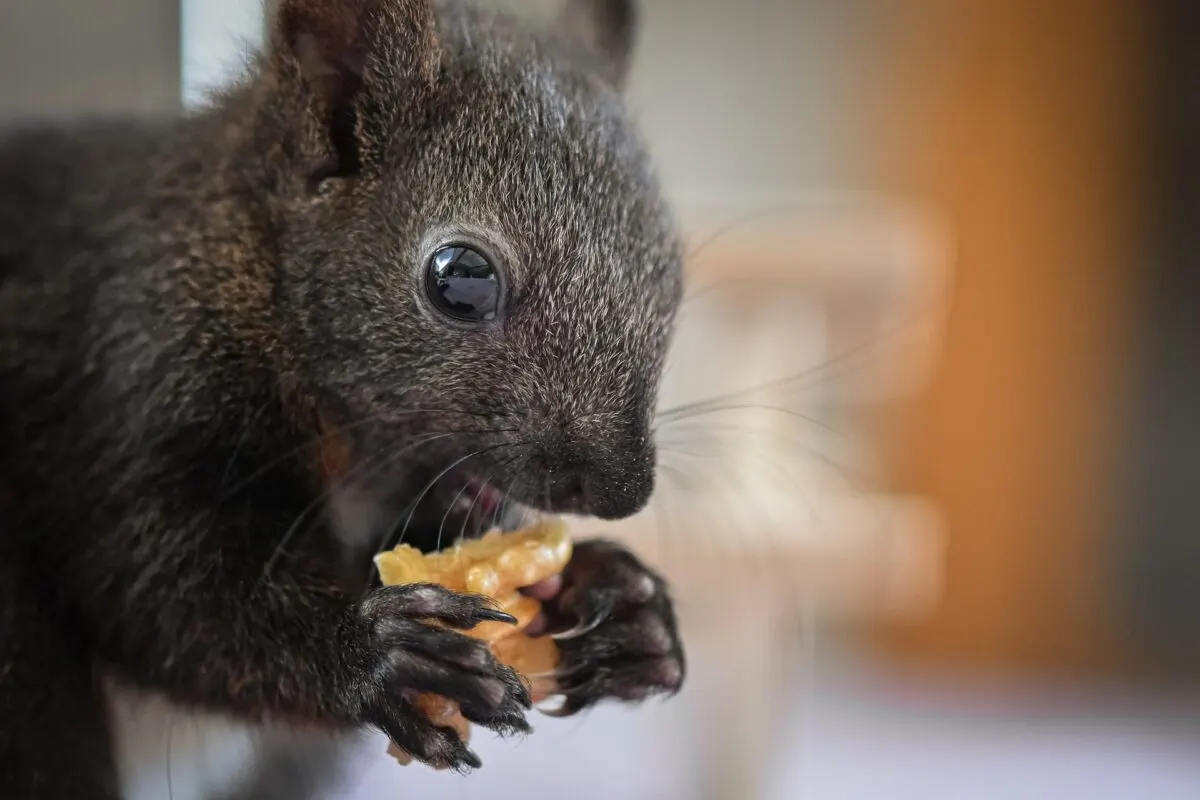Are you ready to embark on a furry adventure filled with cuteness and wonder? Have you ever wondered what it’s like to raise a baby squirrel? Are you curious about the secret lives of these fascinating creatures?
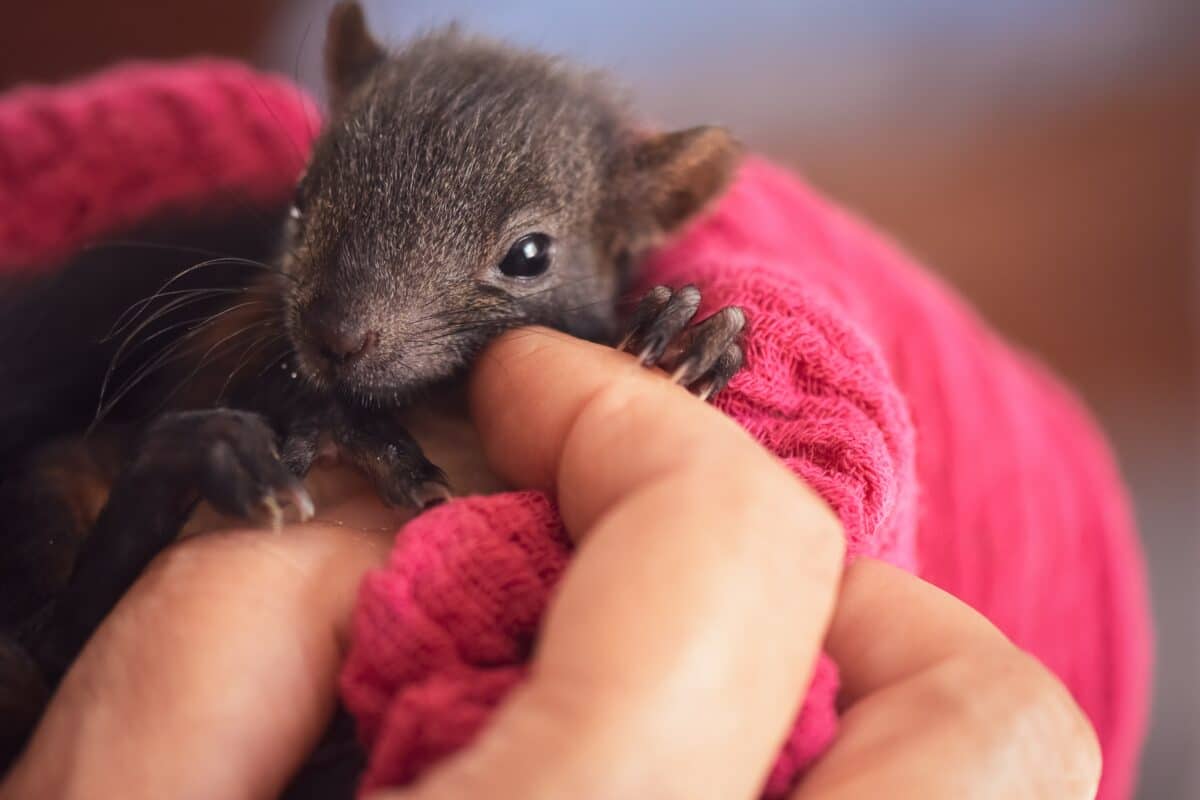
If so, you’re in for a treat because we’re about to take you on a journey that will leave you breathless and full of awe.
Picture this; A tiny, fuzzy creature with big, round eyes staring up at you with curiosity and innocence. That’s right; we’re talking about baby squirrels, one of the planet’s most adorable and intriguing creatures.
From their playful antics to their unique behaviors, baby squirrels have captured the hearts of many wildlife enthusiasts, pet owners, and animal lovers alike. But what do you know about these furry little critters? How much do you learn about their life cycle, behavior, and characteristics? And if you faced the challenge of raising an orphaned or injured baby squirrel, would you know what to do?
Well, fear not because this article will deeply dive into the fascinating world of baby squirrels. We’ll explore their life cycle from birth to adulthood, uncover their secrets and behaviors, and provide tips on caring for a baby squirrel in need. Whether you’re an animal lover, a curious reader, or a soon-to-be squirrel parent, this article is for you.
So, let’s grab our acorns and jump right in!
The Miracle of Life: How Baby Squirrels Are Born
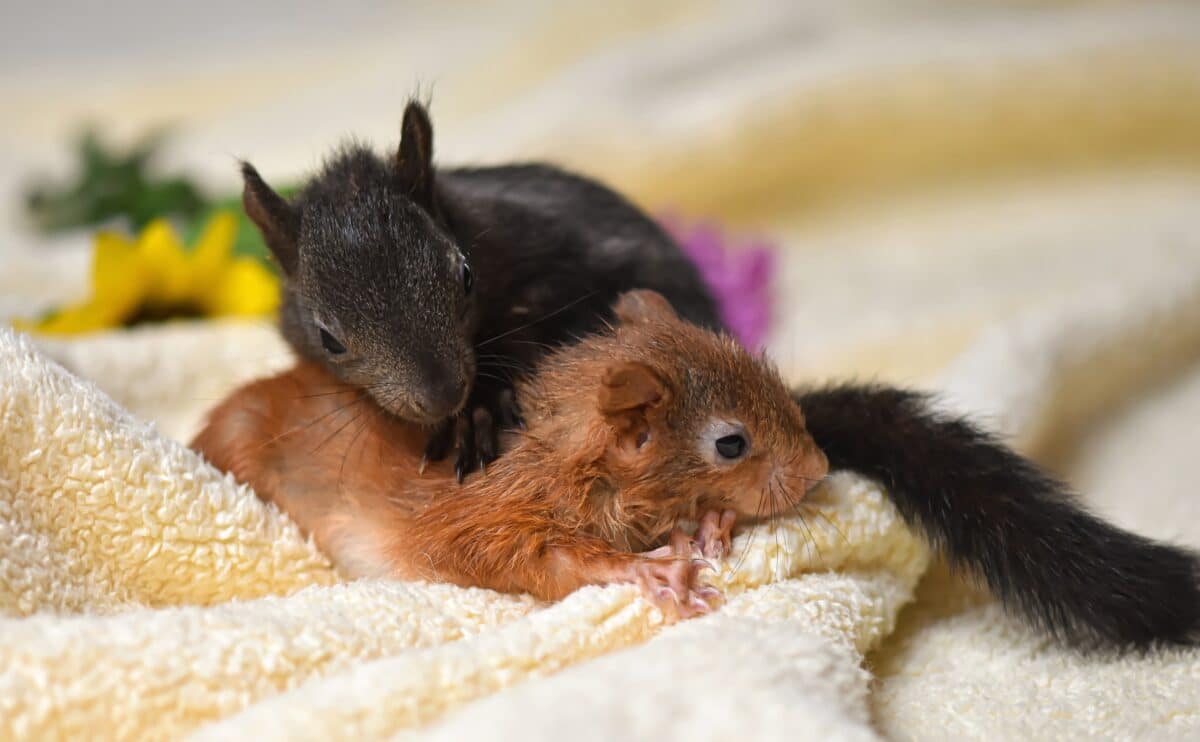
It all starts with a tiny acorn. Well, not really, but you get the idea. Baby squirrels are born after a mating ritual that can be as cute as it is intriguing. So, let’s dive into the world of baby squirrel birth and uncover the miracle of life that brings these adorable creatures into the world.
A Nutty Mating Ritual
Before baby squirrels can be born, there must be a nutty mating ritual. The male squirrel will often perform elaborate displays of acrobatics and agility to impress the female squirrel. Once he wins her over, they’ll mate for several hours, sometimes even days.
The female squirrel’s pregnancy lasts for around 45 days, and she’ll typically give birth to a litter of two to five baby squirrels. These litters are called “kittens” or “pups,” depending on the squirrel species.
The Miracle of Birth
When it’s time for the baby squirrels to be born, the mother will find a safe and secure place to give birth, such as a tree hollow or a cozy nest made of leaves, twigs, and other materials.
This nest is called a “drey,” and it’s where the baby squirrels will spend the first few weeks of their lives.
The actual birth of the baby squirrels is a fascinating process. The mother squirrel will usually give birth one at a time, with each baby being born around 15 to 30 minutes apart. As the baby squirrel emerges from the mother’s body, she’ll gently bite through the amniotic sac and clean the baby with her tongue.
The First Few Weeks
The first few weeks of a baby squirrel’s life are critical for survival. The mother will keep the babies warm and well-fed with her milk, which is incredibly rich in nutrients. As the babies grow, they’ll open their eyes and explore their surroundings, albeit with wobbly legs and limited mobility.
During this time, the mother squirrel rarely leaves her babies alone, as they are vulnerable to predators such as birds of prey, snakes, and other animals. She’ll also teach them essential survival skills, such as climbing, jumping, and foraging for food.
7 Surprising Physical Characteristics
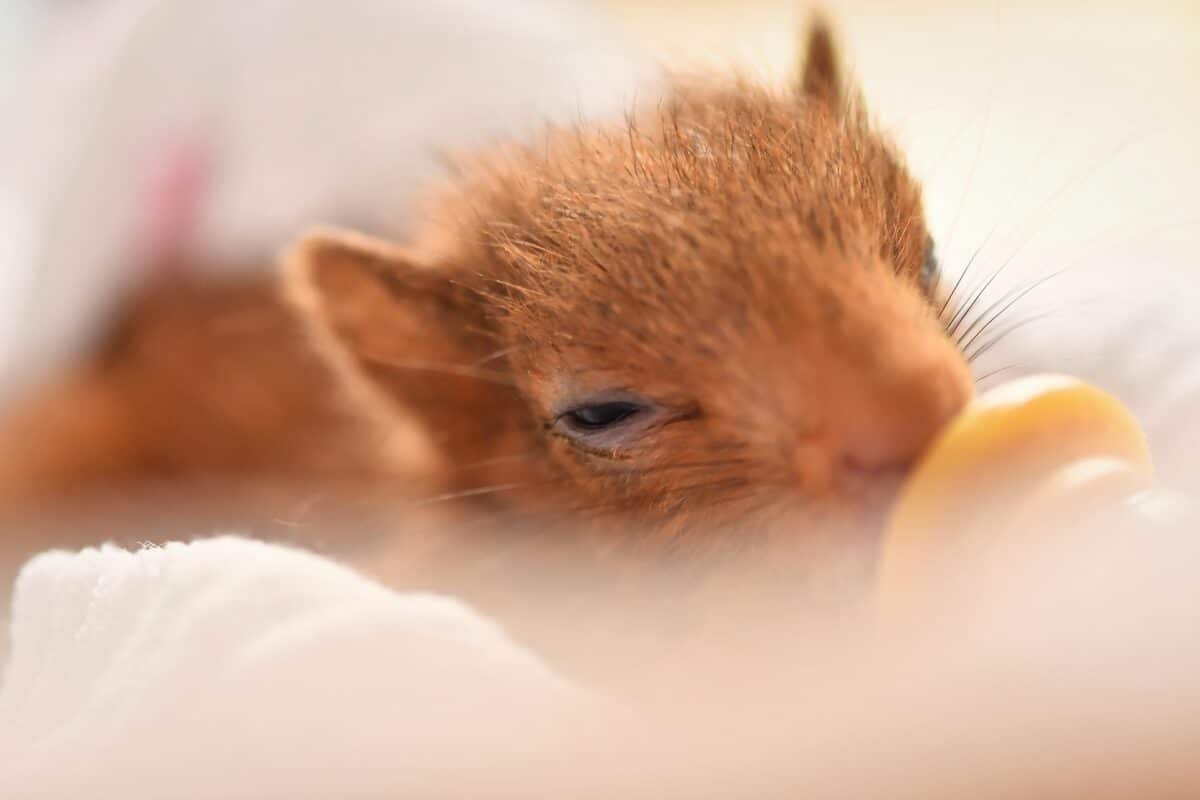
Baby squirrels are undoubtedly some of the most adorable creatures in the animal kingdom. But did you know that these little critters have some surprising physical characteristics that set them apart from their adult counterparts?
Let’s look closer and discover ten surprising facts about baby squirrels.
- 7. No Fur, No Problem: Contrary to popular belief, baby squirrels are not born with fur; they are entirely hairless, with only a thin layer of skin covering their bodies. But don’t worry; their mother’s warmth and care keep them cozy until their fur begins to grow around two weeks after birth.
- 6. Toothless Wonders: Another surprising fact about baby squirrels is that they are born without teeth, meaning they are solely dependent on their mother’s milk for nutrition for the first few weeks of their lives.
- 5. Tiny Tails: While adult squirrels are known for their long, bushy tails, baby squirrels have a different story. Their seats are surprisingly short and thin, with little to no fur.
- 4. Big Ears: Baby squirrels have disproportionately large ears, and this is because their hearing is essential for detecting potential predators or threats.
- 3. Sharp Claws: Baby squirrels may be small, but they have surprisingly sharp claws. These claws help them climb and cling to surfaces, which is essential for survival in their natural habitats.
- 2. Noises Galore: While adult squirrels are known for their chattering and chittering, baby squirrels have their vocalizations. They make various high-pitched sounds to communicate with their mother and siblings, including chirps, whines, and squeaks.
- 1. Unique Coloration: Finally, baby squirrels have unique coloration that sets them apart from adult squirrels. They are often lighter in color and have a more uniform appearance, with less variation in their fur.
How Long It Takes for a Baby Squirrel to Reach Maturity
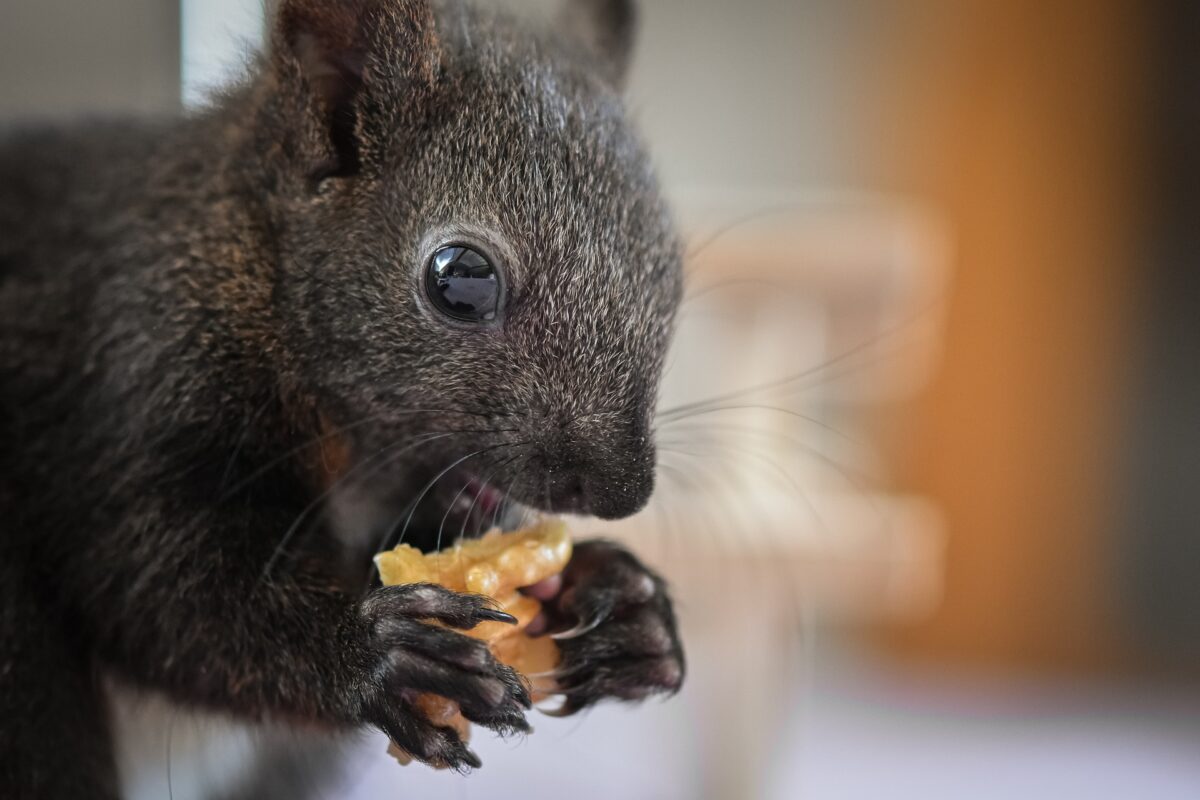
Baby squirrels are undoubtedly one of the animal kingdom’s cutest and most beloved creatures. But how long does it take for these adorable little critters to grow up and become fully mature squirrels?
Here is a sneak peek of a squirrel’s development stages and explore the factors that affect their growth and maturity.
- The Early Stages of Development: Baby squirrels are born blind, deaf, and utterly dependent on their mother for survival. They rely solely on their mother’s milk for nutrition and warmth for the first few weeks of their lives. During this time, developing their muscles and coordination and gain weight at an astonishing rate.
- The Weaning Stage: Around 6 to 8 weeks of age, baby squirrels enter the weaning stage, where they start to eat solid food and drink water in addition to their mother’s milk. During this stage, they become more independent and explore their surroundings.
- Juvenile Stage: Around 12 weeks, baby squirrels enter the juvenile stage, becoming more independent and adventurous. They spend more time away from their mother, and their fur becomes thicker and more luxurious. They also begin to develop their signature bushy tails, which they’ll use for balance and communication throughout their lives.
- Adolescence: Around 4 to 5 months, baby squirrels enter adolescence, looking and acting more like adult squirrels. They become sexually mature during this stage and may start to show territorial behavior and courtship rituals.
- The Final Stage: It takes about 6 to 9 months for baby squirrels to mature fully. During this stage, they are fully grown and have developed all of adult squirrels’ physical and behavioral characteristics. They have thicker fur and sharper claws and are more adept at navigating their environment.
Factors that Affect Growth and Maturity
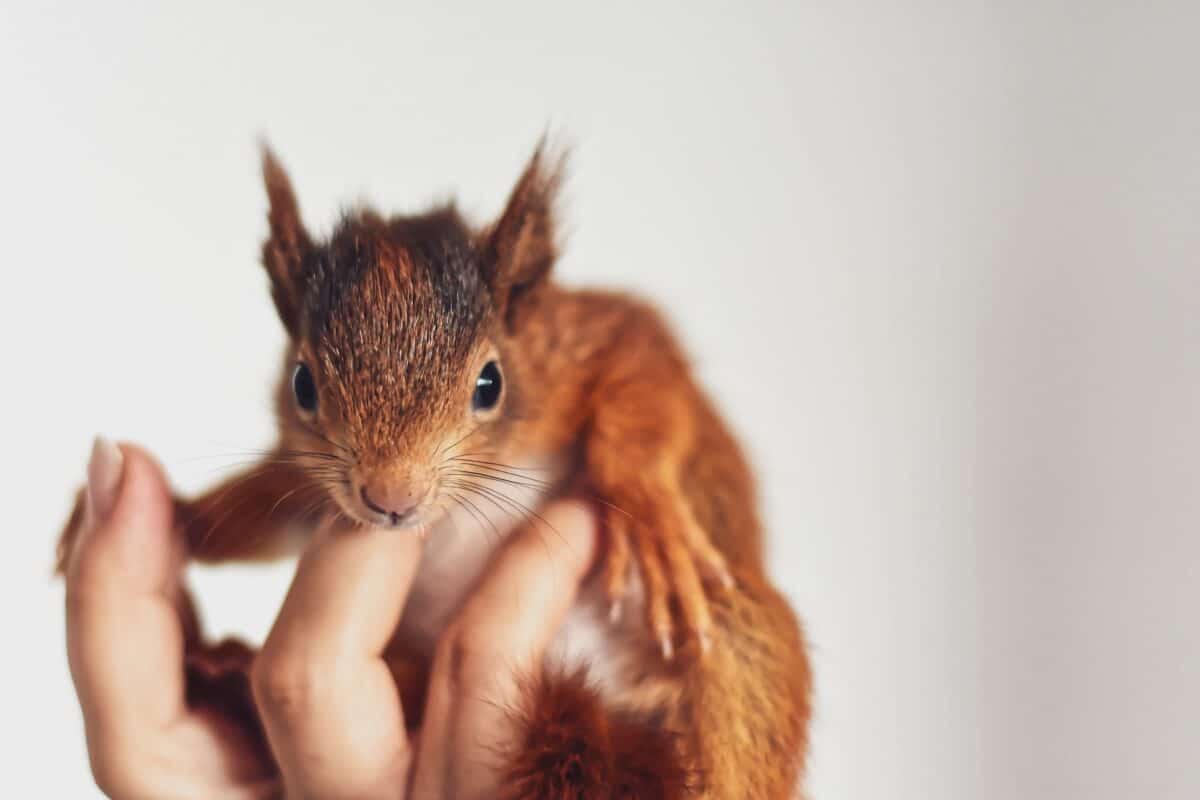
The time it takes for a baby squirrel to reach maturity varies depending on multiple factors, including genetics, diet, environment, and the species of squirrel. Let’s take a closer look at each of these factors and explore how they impact a squirrel’s growth and development:
- Genetics: Just like humans, the genetics of a baby squirrel plays a significant role in its growth and development. Some species of squirrels naturally mature faster than others. For example, the Eastern gray squirrel reaches maturity at around 10-12 months, while the American red squirrel may take up to 18 months to reach maturity.
- Diet: A well-balanced and nutritious diet is essential for a baby squirrel’s growth and development. A diet lacking essential nutrients or deficient in calories can result in delayed growth and stunted development. Baby squirrels need a diet rich in protein, fats, and carbohydrates to ensure they have enough energy to grow and develop properly.
- Environment: The environment in which a baby squirrel lives can also impact its growth and development. Squirrels that live in areas with ample food sources and few predators tend to grow and mature more quickly than those that do not. Additionally, squirrels that live in colder climates may take longer to mature than those in warmer temperatures.
- Predators: Predators such as hawks, owls, and cats can significantly impact a squirrel’s growth and development. If a baby squirrel is born in an area with a high predator population, it may have a more challenging time surviving, and experience delayed growth and maturity.
- Stress: Stress can also impact a baby squirrel’s growth and development. Squirrels that experience high levels of stress, such as being separated from their mothers, may experience delayed growth and development.
The Importance of Communication for Baby Squirrels
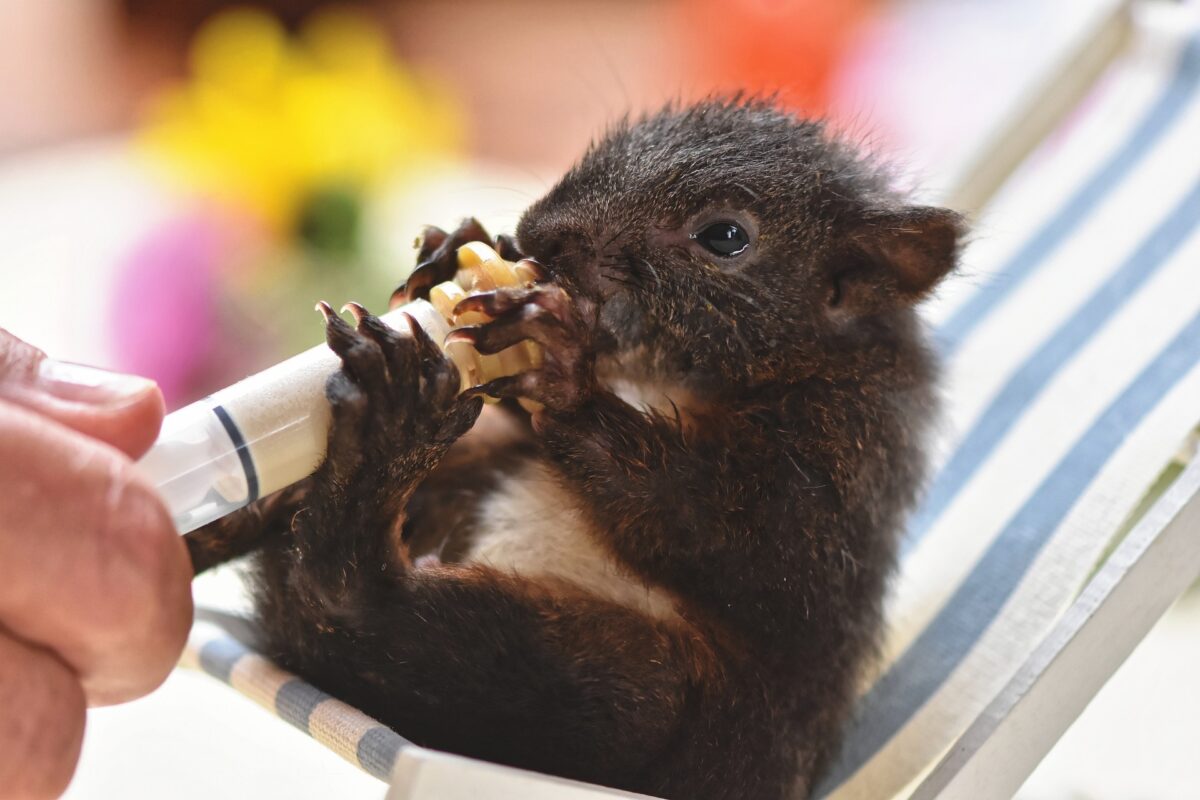
Communication is vital for any species to thrive, and baby squirrels are no exception. Baby squirrels are born deaf and blind, making communication essential for survival. Mother squirrels have evolved several communication methods to ensure their babies are safe, well-fed, and healthy.
- Vocalizations: They communicate with each other and their mothers through vocalizations. These vocalizations are high-pitched and often difficult for humans to hear. Mother squirrels use different vocalizations to communicate with their babies, such as chirps, grunts, and squeaks. These sounds can convey different meanings, such as a warning of danger or a call for food.
- Body Language: In addition to vocalizations, they use body language to communicate with each other and their mothers. For example, when a baby squirrel is hungry, it may climb onto its mother’s back and nuzzle her belly to indicate that it’s time to nurse. Mother squirrels may also use body language to protect their babies, such as standing guard over them or fluffing up their fur to make themselves look more extensive and more intimidating to potential predators.
- Scent Marking: Squirrels also use scent markings to communicate with each other. Mother squirrels produce a pheromone that helps their babies identify them. This pheromone is crucial for baby squirrels to bond with their mothers and feel safe and secure.
- Learning from Others: Baby squirrels also learn to communicate by observing and imitating their mothers and other squirrels. For example, when a mother squirrel warns her babies of danger, they learn to associate that sound with a threat and may make the same sound when they sense danger in the future. Additionally, as they grow older, they begin to communicate with each other more frequently, strengthening their bond and social skills.
The Power of Communication
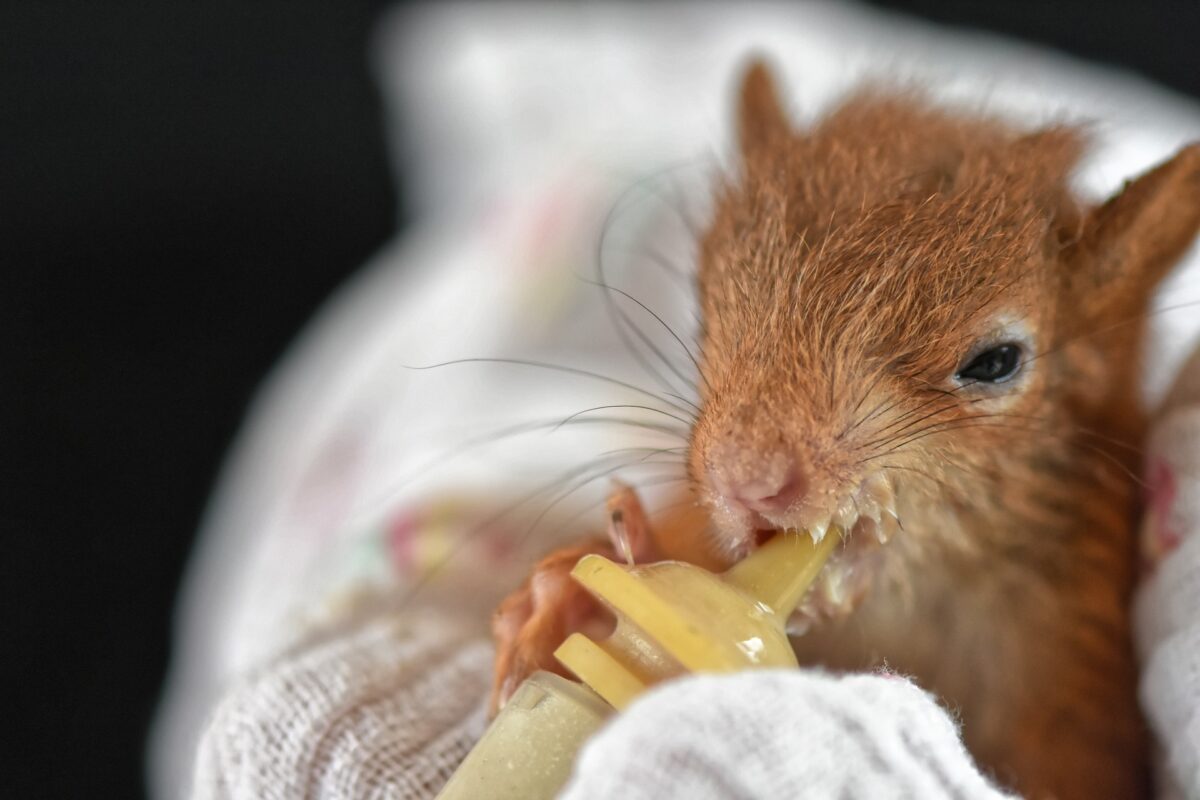
Communication is essential for their survival. With effective communication, baby squirrels could find food, avoid predators, and navigate their environment.
Mother squirrels play a crucial role in teaching their babies to communicate effectively, ensuring they have the best chance of survival.
Tips On Feeding and Housing
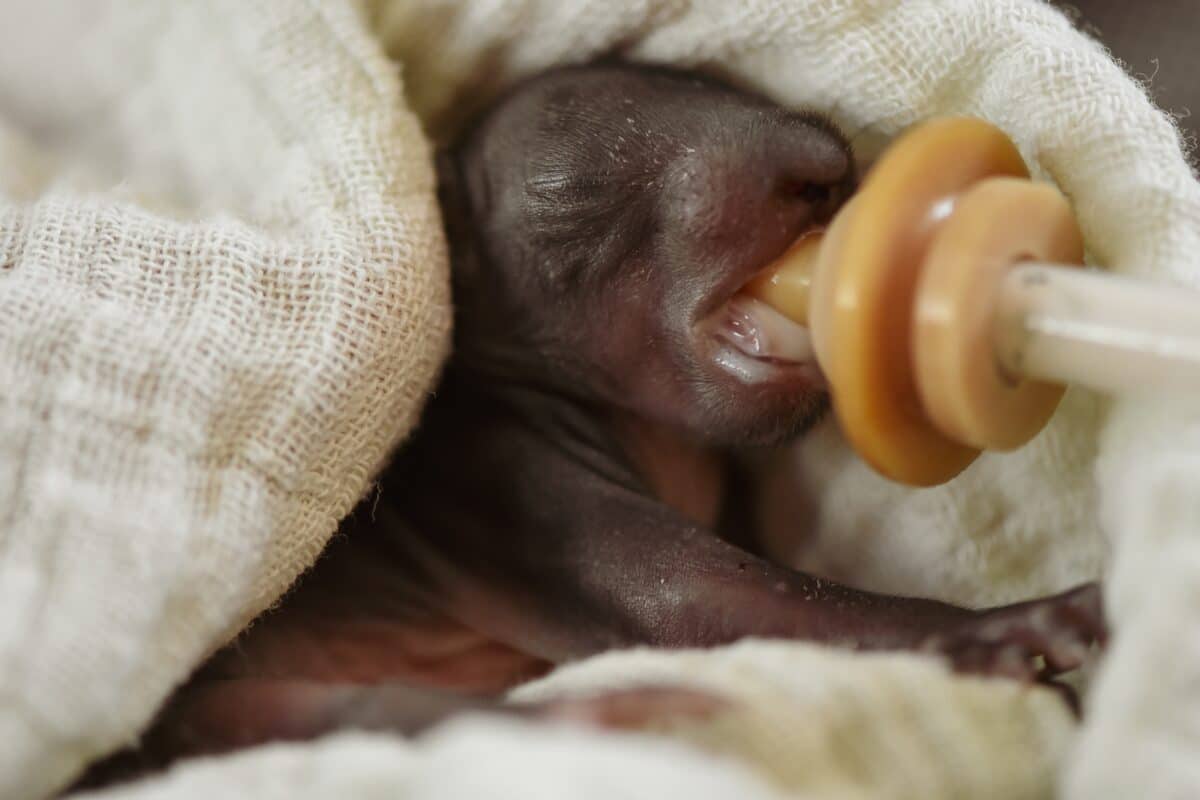
Feeding and housing a baby squirrel can be a rewarding experience, but it also requires a great deal of patience, care, and attention to detail.
Whether you are caring for an orphaned squirrel or have decided to raise one as a pet, providing the right food and housing is crucial to their health and well-being.
Here are tips on how to feed and house a baby squirrel, so you can help them thrive.
Proper Diet
Feeding a baby squirrel can be tricky, as their nutritional needs are specific and require attention to detail.
They should be fed a formula specifically designed for their species, as their nutritional requirements vary depending on their age and development stage. A formula designed for puppies or kittens will not provide the right balance of nutrients for a them.
Some specialized pet stores or animal rehabilitation centers sell squirrel milk replacer formulas, which can be mixed with water to create a nutritious recipe for them. You can also feed them with a syringe or a small pet nursing bottle.
However, it is essential to ensure the formula is not too hot or cold before feeding them.
In addition to the formula, baby squirrels may eat solid foods such as fruits, vegetables, nuts, and seeds as they age. As they grow, you can gradually introduce solid foods into their diet.
Proper Housing
When housing them, a cozy and secure nest is essential. You can create a nest using a small box lined with a soft cloth or shredded paper towels. Place the container in a warm, quiet area, away from loud noises and disturbances.
It is important to note that they are curious and active animals that require plenty of space to climb, play, and exercise.
If you plan on keeping a squirrel as a pet, you must provide them with a larger enclosure with branches, ropes, and other items that mimic its natural environment.
Other Considerations for Caretaking
When caring for a baby squirrel, it is essential to remember that they require a great deal of attention and care.
Here are some additional tips to help you care for a baby squirrel:
- Keep them warm: They cannot regulate their body temperature, so it is crucial to keep them warm. You can use a heating pad or a hot water bottle wrapped in a towel to provide warmth.
- Help them go to the bathroom: They need assistance going to the bathroom until they are old enough to do it independently. You can gently stimulate their genital area with a warm, damp cloth to help them eliminate waste.
- Seek veterinary care: See veterinary care immediately if you notice any signs of illness or injury. They are delicate creatures that require prompt medical attention if they become sick or injured.
7 Fun Facts
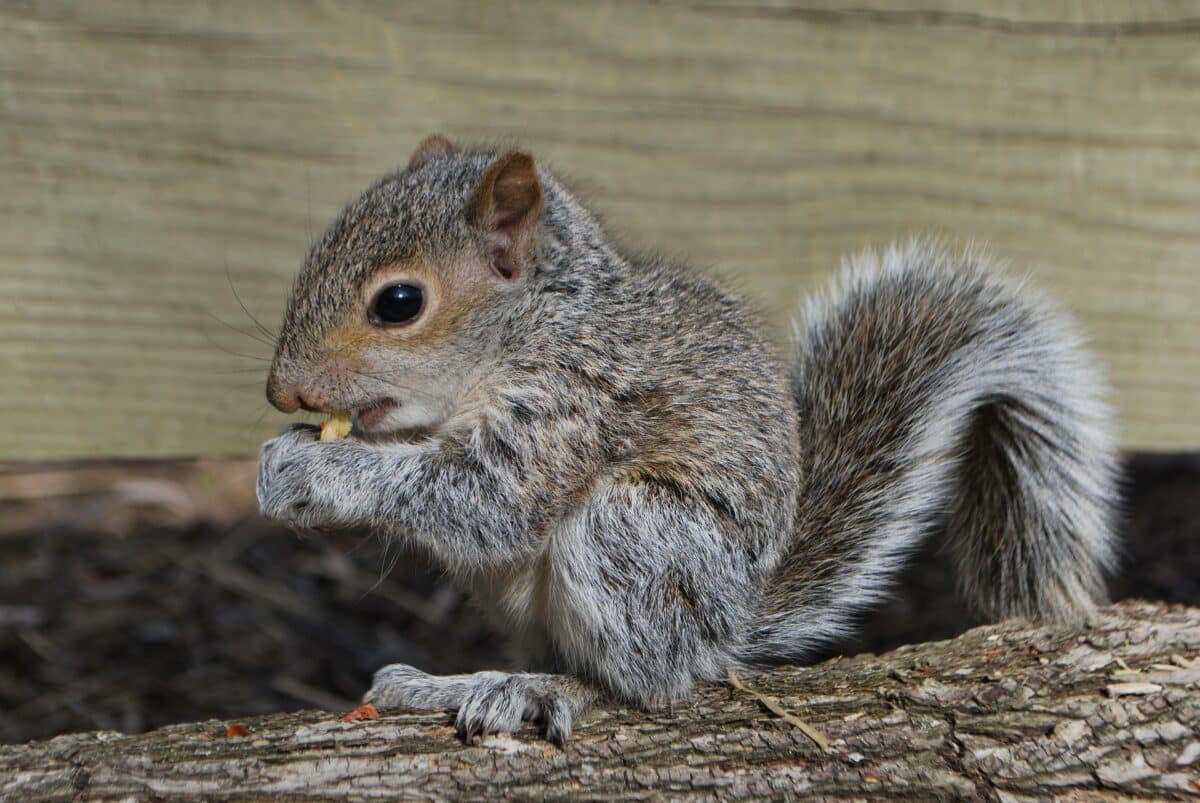
- They are born blind and deaf: When they are born, they are completely blind and deaf. They rely on their sense of smell and touch to find their way around and communicate with their mother. It takes about four to six weeks for their eyes and ears to develop fully.
- They have a high mortality rate: Unfortunately, not all baby squirrels survive until adulthood. Some studies have shown that up to 50% of baby squirrels die within their first year, and this is due to several factors, including predation, disease, and accidents.
- They can communicate through vocalizations and body language: While they may be born deaf and blind, they can still communicate with their mother and siblings through various vocalizations and body language. They use chirps, squeaks, and other sounds to convey different messages, such as hunger, distress, or contentment.
- They are born with fur: Unlike many other mammals, they are born with a full fur coat, and this helps keep them warm and protected from the elements, as they are often born in the spring when temperatures can still be chilly.
- They can be hand-raised: If a baby squirrel is orphaned or abandoned, it is possible for humans to hand-raise them. However, this requires much knowledge and experience, as they have specific dietary and care needs.
- They are natural climbers: They are natural climbers from a very young age, using their sharp claws and strong legs to climb trees and other structures easily.
- They can live in a variety of habitats: Depending on the species, they can live in various habitats, including forests, parks, and urban areas. They are adaptable creatures that can thrive in many different environments.
Conclusion
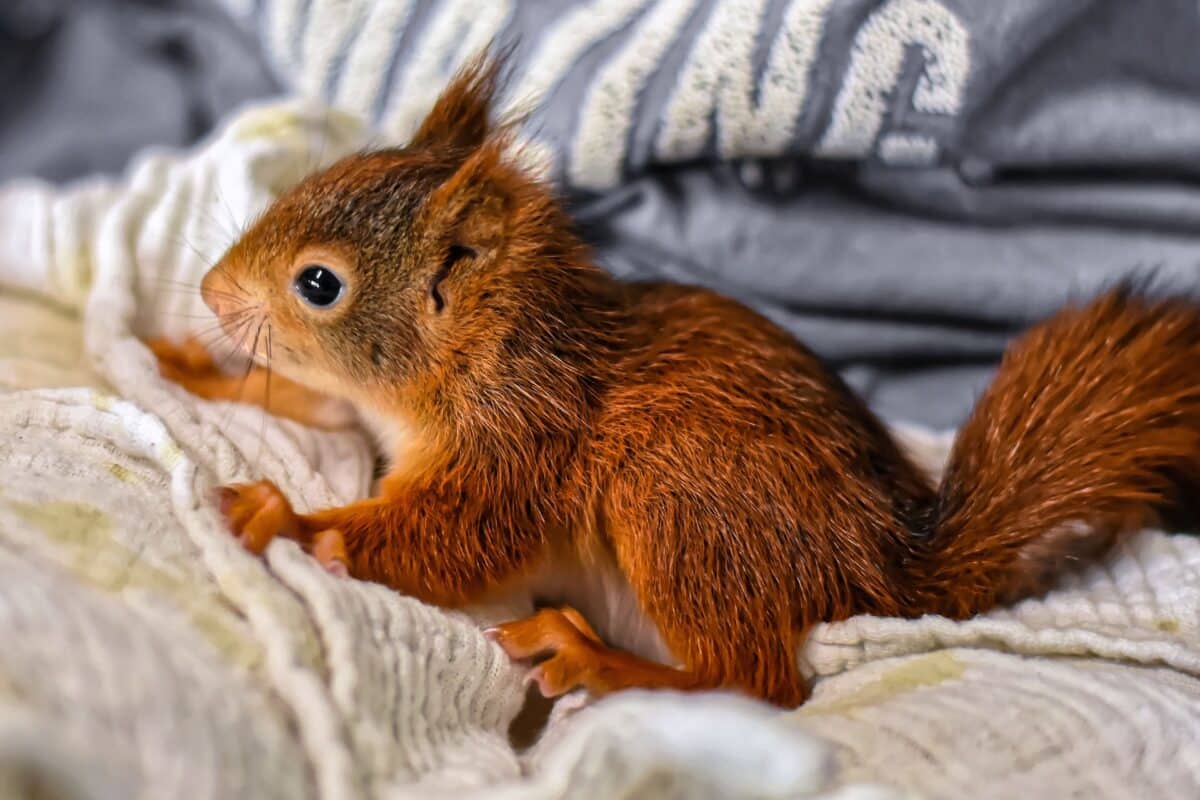
Baby squirrels are amazing creatures with astonishing physical characteristics and astounding communication skills.
If you ever come across an orphaned or injured baby squirrel, seek the help of a licensed wildlife rehabilitator. Share these adorable secrets with others, and you might just become the neighborhood squirrel expert.
So go ahead and embrace your love for these furry little critters!
Thank you for following along this article! Next up, Everything You Need To Know About Squirrel Poop.
Join our Forum for free today!

- 93-Million-Year-Old Crocodile Fossil Discovered With Baby Dinosaur in Its Stomach - July 23, 2024
- Woman Captured Howling with Gigantic White Wolf in Beautiful Footage - July 23, 2024
- Recent Study Reveals Hippos Can Momentarily Fly - July 23, 2024

